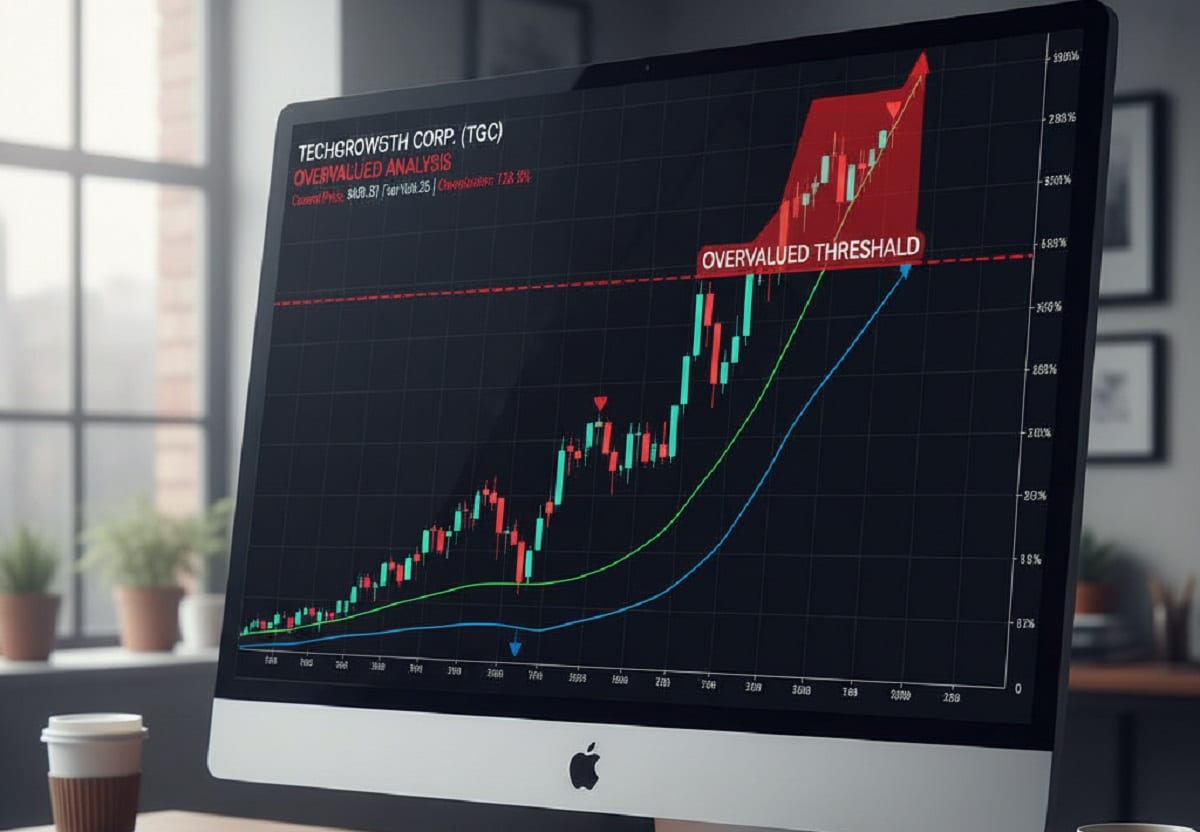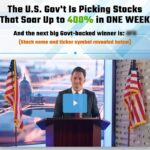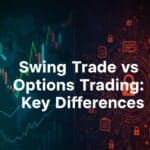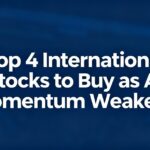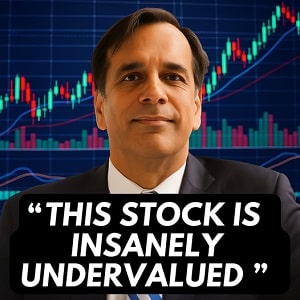Everyone’s piling into these tech darlings — but are they setting up for a painful correction? Here’s how smart investors spot overvalued stocks and where to look instead.
The Problem With Chasing Tech Hype
If you’ve been investing for any length of time, you’ve seen the same story play out again and again.
A new technology hits the headlines. Analysts hype it as “the future.” Retail investors flood in. Wall Street doubles down with glowing forecasts. Prices soar. The media calls anyone who missed it a fool.
And then?
The bubble bursts.
It happened with dot-coms in 2000. Back then, everyone and their neighbor had a stock tip. A tiny internet company with no profits could double in a week. Cisco Systems, the company that built the routers powering the internet, traded at more than 100 times earnings. People believed it was unstoppable. Then the Nasdaq crashed nearly 80%, and portfolios were destroyed.
It happened again with solar in 2008. With oil prices spiking, everyone thought solar panel companies were the future. And they were — just not at the insane prices investors were paying. Dozens of companies went bankrupt when reality caught up.
It happened again with cannabis in 2018. “Weed is the new gold rush,” people said. Stocks went vertical… until the hype wore off, and they came crashing down.
And today? We’re seeing the same script play out in the hottest corners of tech: AI, electric vehicles, and cloud software.
Why This Matters Right Now
If you own any of the “popular” names in these sectors, you’re sitting on a time bomb. Yes, the technologies are real. Yes, the companies are impressive. But here’s the harsh truth:
A great company doesn’t always mean a great stock.
Investors forget this all the time. They confuse innovation with guaranteed profits. But as an investor, you’re not buying the company itself — you’re buying the stock. And the stock is only as good as the price you pay.
When a stock is priced for perfection, the tiniest disappointment can lead to devastating losses. That’s the danger investors face right now with some of the market’s most beloved tech names.
I’ve been through these cycles before, and I can tell you: the warning signs are flashing.
My Own Lesson About Overpriced “Winners”
I’ll never forget the first time I got burned chasing hype.
It was the late 1990s, during the dot-com boom. Everyone around me seemed to be getting rich overnight. Stocks with no profits and no business model were doubling weekly. The fear of missing out was everywhere.
I bought into Cisco Systems — at the time, one of the most admired companies on the planet. And honestly, it was a phenomenal business. Cisco built the backbone of the internet. Its routers and switches were essential to connecting the world. Every analyst on Wall Street was calling it a “must-own.”
The problem? The stock was trading at over 100 times earnings.
I told myself, “It’s different this time. This is the future. It’s worth paying up.”
Then the tech bubble burst.
Cisco’s stock dropped more than 80%. My portfolio went with it.
That experience left a scar. But it also taught me one of the most valuable lessons of my investing career:
Even the best companies make terrible investments if you buy them at the wrong price.
The Truth Most Investors Don’t Want to Hear
Here’s something I wish I knew back then: Wall Street isn’t in the business of protecting your money. Wall Street is in the business of selling hype.
They’ll tell you that a stock is a “buy” at any price. They’ll roll out fancy projections showing growth as far as the eye can see. They’ll insist “this time is different.”
But the reality is, no stock grows to the sky. Every company, no matter how disruptive, faces competition, slowing growth, or a change in market conditions.
If you buy a stock when it’s already priced for perfection, you’re setting yourself up for pain.
And right now, I’m seeing too many investors repeat the same mistake I made with Cisco — piling into hyped-up tech names without looking at the price tag.
That’s why I want to walk you through three extremely popular tech stocks that are dangerously overpriced today. These are names everyone loves, but the numbers don’t make sense. And when reality sets in, it won’t be pretty.
3 Popular Tech Stocks That Are Dangerously Overpriced Right Now
1. Nvidia: The AI Poster Child With a Price Tag to Match
If there’s one stock that defines the current AI frenzy, it’s Nvidia.
On paper, Nvidia looks unstoppable. Their chips are the beating heart of artificial intelligence. Every major AI project — from ChatGPT to autonomous vehicles — relies on Nvidia’s GPUs to crunch the massive datasets required. Demand is through the roof. Revenue has exploded. Shareholders have been rewarded with jaw-dropping gains.
I won’t deny any of that. Nvidia is a phenomenal company. The problem is that its stock has been bid up to levels that defy financial gravity.
At recent prices, Nvidia trades at more than 40 times forward earnings. For a company already generating hundreds of billions in revenue, that’s extreme. To justify today’s valuation, Nvidia has to keep growing at breakneck speed for years — with no slowdown, no missteps, and no competition biting into its market.
That’s not realistic.
Competition is coming fast. AMD, Intel, and a swarm of custom AI chip startups are racing to carve out market share. Major customers like Microsoft, Amazon, and Google are even designing their own chips in-house. If Nvidia loses just a slice of business, growth expectations collapse.
We’ve seen this movie before. Remember Cisco in the late 1990s? It was also the backbone of the internet revolution. Analysts said demand would never slow. Cisco stock soared to the stratosphere… then lost more than 80% when reality fell short of hype.
I see Nvidia in a very similar position today. It doesn’t mean the company is doomed. It means the stock is dangerously overpriced, and late buyers are taking on way too much risk.
This is exactly the kind of situation Eric Fry warns about. He calls it “Sell This, Buy That.” Nvidia has become a “sell this” — not because the company is bad, but because the stock price assumes it will dominate AI forever. Smart investors are better off taking profits here and rotating into undervalued opportunities in the same megatrend.
2. Tesla: The EV Revolutionary Facing Brutal Reality
Tesla deserves credit for changing the world. Before Elon Musk, electric vehicles were seen as niche. Today, every major automaker has an EV strategy, and Tesla is the name everyone thinks of when it comes to clean transportation.
But here’s the hard truth: the market is catching up, and Tesla’s valuation is still stuck in fantasyland.
Tesla currently trades at a price-to-earnings ratio that’s multiples higher than Ford, GM, Toyota, or Volkswagen. Investors still act as if Tesla is the only EV game in town. That simply isn’t true anymore.
Competition is heating up fast — not just from legacy automakers, but from aggressive Chinese players like BYD, which now sells more EVs than Tesla in several markets. These competitors have government backing, scale advantages, and are willing to undercut Tesla on price.
Meanwhile, Tesla’s own growth is slowing. Vehicle deliveries are missing estimates. Margins are under pressure as Tesla cuts prices to stay competitive. The “Tesla premium” that once commanded sky-high valuations is eroding.
Does Tesla still innovate? Absolutely. But innovation doesn’t automatically translate to stock market gains, especially when expectations are already sky-high. Investors paying today’s prices are assuming Tesla keeps growing like a young startup — when in reality, it’s maturing into a slower-growth automaker facing global competition.
We’ve seen this pattern too. Think about BlackBerry during the smartphone revolution. They were the pioneer, the icon. But once Apple and Android caught up, BlackBerry’s dominance — and stock price — collapsed.
That’s the risk for Tesla. The company isn’t going bankrupt, but the stock is priced as if it will crush every competitor forever. That’s not how markets work.
This is another “Sell This” in Eric Fry’s playbook. Tesla changed the world, but investors need to rotate into new, overlooked EV and clean energy plays trading at realistic valuations. Fry’s research identifies those — the “Buy That” opportunities most people are ignoring.
3. Snowflake: The Cloud Darling With Slowing Growth
Snowflake is one of the hottest names in cloud data. Its platform lets companies store and analyze massive datasets seamlessly. Analysts have called it a “once-in-a-generation software company.”
And yes, the technology is impressive. Customers love it. Revenue growth was jaw-dropping in its early years. That’s why Snowflake became one of the most expensive IPOs of all time.
But here’s the reality check: growth is slowing.
Revenue, once growing at 120% annually, is now growing at less than half that pace. Customer spending is normalizing. The easy growth days are gone. Yet the stock is still priced like Snowflake is doubling year after year.
At current valuations, Snowflake trades at a price-to-sales ratio north of 20. That’s astronomical for a company whose growth trajectory is flattening. When growth slows but valuations stay sky-high, it’s a recipe for disappointment.
Investors forget: markets don’t pay for the past. They pay for the future. Snowflake’s past was spectacular, but its future growth will be much harder to achieve — especially with giants like Amazon Web Services, Google Cloud, and Microsoft Azure competing aggressively.
This isn’t the first time a “cloud darling” faced this issue. Salesforce once traded at nosebleed valuations, only to deliver far lower returns as growth slowed. Investors who bought into the hype were stuck with dead money for years.
Snowflake is at risk of the same outcome. The company might succeed long-term, but the stock is priced as if nothing will ever go wrong. That’s the definition of overpriced.
Again, this is the setup Eric Fry specializes in identifying. Snowflake is the “sell this” — a hyped-up name with more risk than reward. Fry points investors to “buy that” alternatives in cloud and data infrastructure trading at much more attractive entry points.
“But What If They Keep Going Up?”
I can almost hear the pushback right now.
“Nvidia’s been on fire for years. Tesla keeps proving the doubters wrong. Snowflake is a Wall Street darling. What if I sell and these stocks keep ripping higher?”
That’s a fair concern. Nobody wants to look back and feel like they missed out on more gains. But here’s the thing: that fear is exactly what traps investors into riding bubbles all the way up… and all the way down.
I’ve lived it.
Back in 1999, I told myself, “Cisco can’t possibly go higher.” Then it did. Over and over again. I ignored the red flags because I was afraid of missing more upside. When the crash finally came, it erased not just the extra gains I’d hoped for — but most of my original investment, too.
Here’s the truth: you don’t have to own a stock forever to profit from it.
Great investing isn’t about squeezing every last dollar out of a trade. It’s about capturing the best part of the move and protecting your capital for the next opportunity. The investors who win long-term aren’t the ones who “ride it to the top.” They’re the ones who get off the ride before it plunges.
Think of it like this: If a stock has already given you a big win, why risk handing it all back? The market isn’t a casino where you’re forced to leave your chips on the table. You can cash out, lock in profits, and redeploy that money into opportunities with more upside and less downside.
That’s what Eric Fry’s strategy is all about. He doesn’t just say “sell this” and leave you with cash on the sidelines. He says “Sell This, Buy That.” Rotate out of the overpriced, overcrowded names, and move into undervalued plays in the same powerful trends.
The beauty of this approach is that you don’t have to fear missing out. You’re not leaving the AI boom, or the EV revolution, or the cloud megatrend. You’re just choosing to play them smarter.
Instead of holding the obvious names that everyone else is chasing at inflated prices, you shift into the hidden gems that are still cheap, overlooked, and full of potential. That’s how you keep your money working — without taking unnecessary risks.
So yes, Nvidia, Tesla, and Snowflake could keep climbing in the short term. Nobody knows exactly when a bubble bursts. But when you look at their valuations and growth trajectories, it’s clear the upside is limited compared to the downside risk.
And as any experienced investor will tell you, when risk/reward is that lopsided, it’s time to take action.
The Clear Next Step: Protect Profits, Find the Next Winners
If you’ve read this far, you probably see the pattern.
Nvidia, Tesla, Snowflake — three of the most popular names in tech — are sitting on pedestals built from hype and sky-high expectations. The businesses themselves are impressive. No argument there. But as investments? The risk/reward has flipped against you.
That’s why the smartest move isn’t to “do nothing” and hope. It’s to take control.
You don’t have to repeat the mistakes of past bubbles. You don’t have to watch your hard-earned gains evaporate the way Cisco investors did in 2000 or solar investors did in 2008.
Instead, you can rotate into the next wave of opportunities — while locking in your profits from the overcrowded names.
And that’s exactly what Eric Fry’s Investment Report is built to help you do.
Eric isn’t a talking head on CNBC chasing headlines. He’s a veteran global macro investor who has spent decades identifying bubbles before they pop and uncovering undervalued plays before they soar. His track record includes spotting the dot-com crash, the housing bust, and the rise of megatrends most people dismissed.
The way he puts it is simple: “Sell This, Buy That.”
Sell the overhyped, overpriced stocks everyone else is chasing. Buy the hidden gems in the same megatrend — companies trading at realistic valuations, with room to run, before Wall Street catches on.
Right now, Eric is sounding the alarm on exactly the kinds of stocks we’ve just talked about. And more importantly, he’s pointing investors toward the overlooked opportunities that could deliver Amazon-like gains in the years ahead.
This isn’t about getting scared out of the market. It’s about playing offense intelligently. Protecting your capital. Staying invested in the most powerful trends of our time — but doing it in a way that maximizes upside and minimizes downside.
👉 Click here to learn more about Eric Fry’s Investment Report.
Do it now, while the crowd is still distracted by overpriced hype. Because by the time they realize the bubble has popped, the real opportunities will already belong to the investors who acted early.

